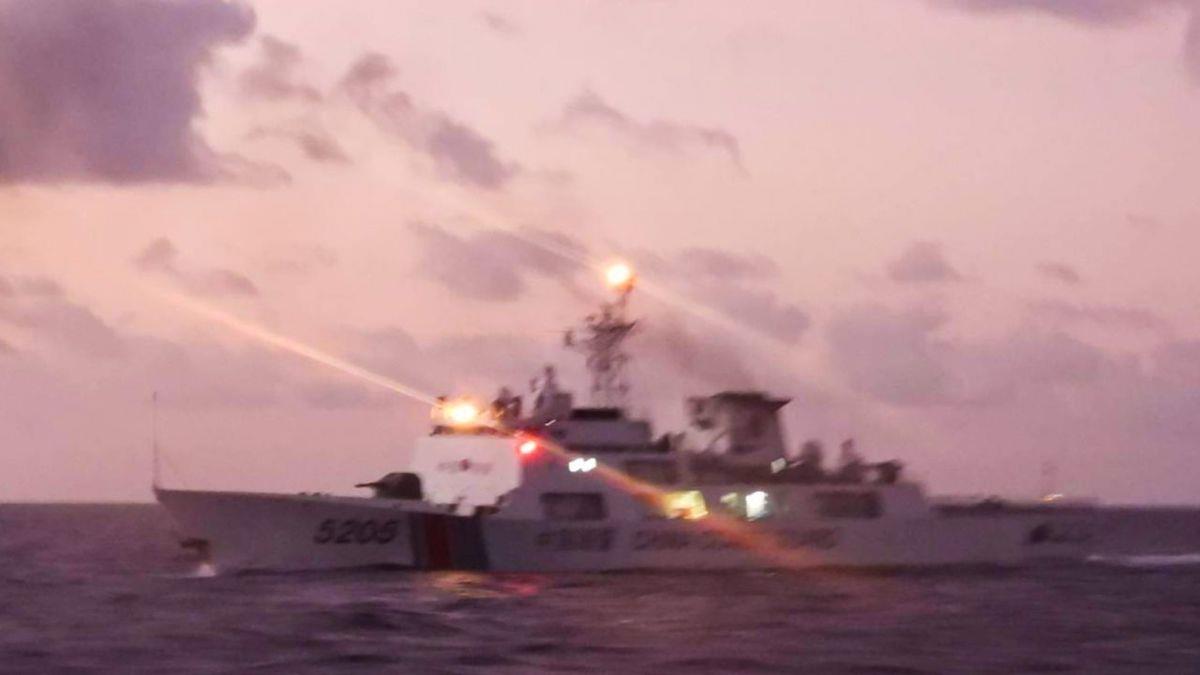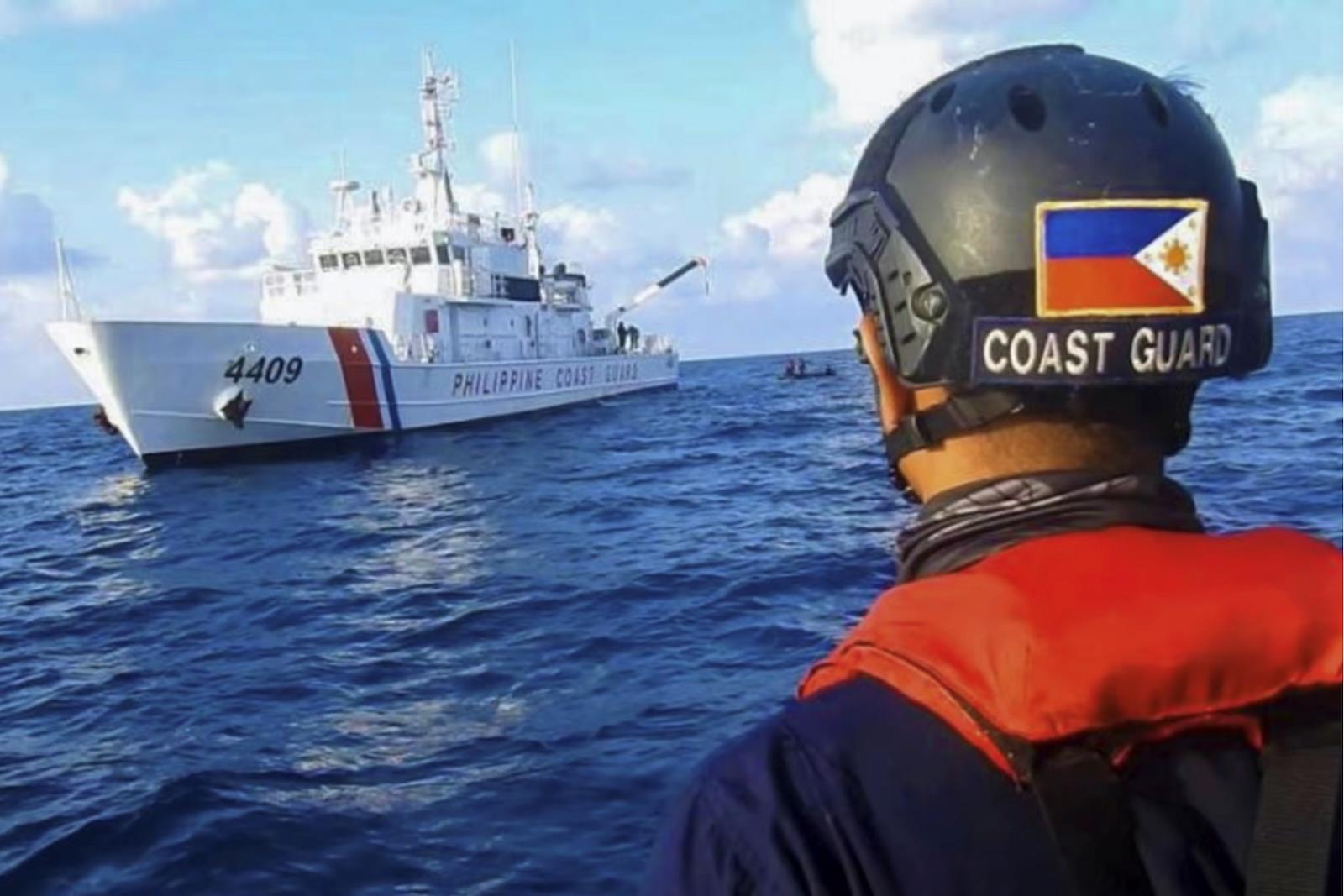(MENAFN- Asia Times) The Philippines has accused China of using a military-grade laser against one of its ships in the South China Sea while on a resupply mission to a claimed outpost, marking a significant ratcheting of tensions in the hotly disputed waters.
On February 6, a Chinese Coast Guard (CCG) ship with bow number 5205 fired a military-grade laser at Philippine Coast Guard (PCG) patrol ship BRP Malapascua during a resupply mission at Second Thomas Shoal, the armed forces of the Philippines spokesperson Medel Aguilar told reporters on February 13.
The laser blast temporarily blinded the Philippine crew aboard the ship, Aguilar said.
The Second Thomas Shoal is known for hosting the Philippine Navy's BRP Sierra Madre, a World War II US LST-542-class tank landing ship intentionally beached in 1999 to serve as an ad-hoc forward outpost in the South China Sea.
pbs news reported that the CCG ship maneuvered dangerously close at 137 meters away from BRP Malapascua to block it from resupplying BRP Sierra Madre. The PCG said in a statement that“the deliberate blocking of the Philippine government ships to deliver food and supplies to our military personnel ... is a blatant disregard for, and a clear violation of, Philippine sovereign rights.”
“I think it's time for the Chinese government to restrain its forces so that it does not commit any provocative act that will endanger the lives of people,” Philippine military spokesperson Aguilar said according to various reports.
China's Foreign Ministry spokesman Wang Wenbin countered that the Philippine ship“intruded in the area without authorization” and urged the Philippines“to respect China's sovereignty and maritime rights and interests and avoid actions that might escalate the situation.” He denied that China used lasers against the BRP Malapascua.
Still, China's apparent new use of non-lethal blinding lasers has significant implications in the South China Sea disputes.

The Philippine Coast Guard alleges a China Coast Guard vessel aimed a laser at a Philippine vessel on February 6, 2023. Image: Philippine Coast Guard
in a february 2022 article for the lowy institute , Peter Layton notes that the People's Liberation Army-Navy (PLA-N) and CCG are both highly disciplined maritime forces and there are several Chinese Communist Party (CCP) officers aboard their ships to ensure that their captains' actions are in line with CCP guidelines. Layton says that using such lasers would not be an accident but rather a purposeful act authorized at the highest level.
Second, Layton says that China's“gray zone” actions have become more violent in recent years. He mentions China's previous use of blinding lasers against US, Australian and Japanese aircraft and ships.
Third, Layton notes that if China used a fire control system in lasering ships, such an action can be considered a hostile act as it means shells and missiles could instantly be cued on the target.
Fourth, Layton points out that China's use of lasers goes against the 1995 Protocol on Blinding Laser Weapons, which China signed in 1998, and raises questions about how China may conduct itself in any future conflicts.
in a november 2022 article for proceedings , Wendell Leimbach and Erick Duckworth note that China's use of lasers in the South China Sea may be in line with its strategic design of a“war without gunsmoke,” in which these actions aim to confound US and allied force responses, undermine allied confidence in US resolve and allow China to incrementally expand its positional advantage and strike US and allied interests first.
The authors note that most of the US Navy's tactics, techniques and procedures (TTPs) – and by extension those of the allied Philippine Navy (PN) – are designed to defeat adversaries with lethal force.
However, most day-to-day and counter-gray zone activities do not require lethal capabilities. This response capability gap makes the US and the Philippines unable to respond effectively to China's gray zone tactics, such as a blinding laser attack.
In a broad strategic sense, China's lasering of the BRP Malapascua may have aimed to underscore the notion that the US is unable to effectively defend its allies at sea.
Those perceptions may have gathered in Manila following the lack of a decisive US response during the 2012 Scarborough Shoal standoff, the 2013 Second Thomas Shoal standoff and the 2021 Whitsun Reef standoff pitting China and the Philippines over contested territories.

Members of the Philippine Coast Guard patrol at the Whitsun Reef in the South China Sea on April 14, 2021. Photo: Philippine Coast Guard
The laser attack may also be China's implied warning to the Philippines for allowing the US access to four key military sites to preposition military assets earlier this month, including at Philippine bases strategically situated in the South China Sea.
China's new threat of using blinding lasers could force the Philippine Navy and other maritime law enforcement agencies to stand down due to the lack of appropriate TTPs, a perception of being overmatched by China, the desire to avoid escalation, and a concern the US will not respond to save Philippine ships, aircraft and personnel during a laser attack.
Nevertheless, there are steps that the US and the Philippines can take to address China's evolving gray zone challenges in the South China Sea.
for example, in a june 2022 article in small wars journal , Matthew Ormsbee suggests that the US should draft and propose significant revisions to its 1951 Mutual Defense Treaty (MDT) with the Philippines, which defines what constitutes a gray zone threat, clarifies US mutual defense obligations and assuages the Philippines' fears of abandonment.
In that direction, Ormsbee notes that the US and Philippines could draw clear“red lines” on China's incursions in Philippine-claimed territories. He suggests those red lines would make clear that China's forays into the Philippines' exclusive economic zone (EEZ) will be met with joint force should they impact on the latter's special rights under the UN Convention on the Law of the Sea (UNCLOS).
The two allies could also state clearly that such incursions will be dealt with using kinetic intervention if diplomatic appeals prove futile, Ormsbee writes, while emphasizing that there should be clear communication from diplomatic and military sources to alert China to ongoing concerns in the Philippines' EEZ.
Ormsbee also recommends that the US internalize the principle that government-backed, non-military actors can be considered aggressors and subject to gray zone countermeasures.
He also suggests that the Philippines should issue diplomatic demands for China to explain its actions or such acts will be considered a prelude to armed conflict, thereby eliminating the ambiguity that provides cover to China's escalating gray zone provocations.